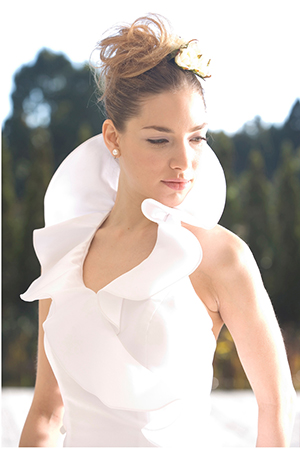 It’s absolutely mandatory to look good on your wedding day. In fact, even that may not be enough. While guests are ultimately bound to forget what hors-d’oeuvre they received with their glass of champagne upon arriving at the reception, they are sure to remember how the bride and groom were dressed on the day. And even if their memory is a little hazy, a wealth of photographic evidence can usually be found in photo albums and on a range of digital media, including DVDs. It’s the unspoken curse of modern technology: one bad hair day can last forever. With this in mind, wedding fashion is of paramount importance. Not only do you need to make the right decisions to impress people on the day, you need to make the right style choices because you need to ensure that in another 50 years you can look at that wedding photograph on the mantelpiece and smile in the knowledge that you both looked hot. The last thing you want to do is bury the photo in a drawer soon after receiving the prints because you are embarrassed by the hideous fashion faux pas you made on the day. And even if you manage to look absolutely fabulous, be prepared for your kids and grandkids to cringe Ð for them it’s obligatory.
It’s absolutely mandatory to look good on your wedding day. In fact, even that may not be enough. While guests are ultimately bound to forget what hors-d’oeuvre they received with their glass of champagne upon arriving at the reception, they are sure to remember how the bride and groom were dressed on the day. And even if their memory is a little hazy, a wealth of photographic evidence can usually be found in photo albums and on a range of digital media, including DVDs. It’s the unspoken curse of modern technology: one bad hair day can last forever. With this in mind, wedding fashion is of paramount importance. Not only do you need to make the right decisions to impress people on the day, you need to make the right style choices because you need to ensure that in another 50 years you can look at that wedding photograph on the mantelpiece and smile in the knowledge that you both looked hot. The last thing you want to do is bury the photo in a drawer soon after receiving the prints because you are embarrassed by the hideous fashion faux pas you made on the day. And even if you manage to look absolutely fabulous, be prepared for your kids and grandkids to cringe Ð for them it’s obligatory.
Plan of Attack
With any luck the potentially traumatic process of choosing your wedding threads will be something you’ll only have to go through once. If you’re an international couple there may be both ‛home’ and ‛away’ legs to prepare for, but either which way, pragmatic, time-conscious planning is vital.
Once you’ve settled on a venue (church, chapel, beach, park, hotel or, most popular recently for slightly more en vogue couples in Japan, a restaurant), decided on the level of formality (and general ‛theme’) and fixed (and secured) your budget, you’re ready to hit the shops. A word of warning, however: popular wedding chapels, hotels and restaurants a la mode can be fully booked months Ð and sometimes, as in the case of the new Ritz-Carlton, Tokyo, years Ð in advance. June is the most popular month for weddings in Japan and so if you plan to get hitched around this time, you should start your initial planning at least six months to one year before the big day. The swankier the joint you’re planning to use, the more time you will need to find a day that isn’t already solidly booked. If planning or general project management is not your thing, you’ll definitely need to employ the service of a wedding planner. He or she will guide you seamlessly through every decision that needs to be made and even help coordinate events on the day. The efficiency of wedding planners cannot be underscored and their effectiveness can be likened to a Black Cab taxi driver in London ferrying passengers from A to B during rush hour.
Contemporary Chic
A ‛contemporary chic’ look for wedding dresses has most certainly replaced the ‛timeless classic’ look that was so prevalent up until the early ‛90s. The ‛timeless classic’ look can best be defined by way of example: think British designers Elizabeth and David Emanuel’s ghastly creation for the late Princess Diana, a design that actually sparked a meringue wedding dress boom in the eighties. Diana’s dress had huge puffed sleeves, a full skirt of pure ivory silk taffeta and was finished off with old lace and hand embroidery that incorporated 10,000 pearls. The dress’s train was a staggering 25-feet long Ð that’s the equivalent of one-twelfth the length of a soccer field! As these types of dresses are out of fashion, they can hardly be called ‛timeless’ now can they? They could be simply called ‛classic’ but don’t forget that this term is usually associated with other like-minded words such as old, boring, uninspiring, archaic and austere… just so you know.
These days, designers Ð and therefore the brides themselves Ð are leaning towards dresses that are far simpler in design. They avoid using too many different fabrics, and take care not to overdo the embellishments and adornments. As a result brides are afforded a far slimmer silhouette in modern times, with waistlines enhanced to accentuate a woman’s natural shape. Contemporary creations are also far more versatile, easy to accessorize (if necessary) and, frankly speaking, look more stylish and effortlessly chic.
Take the ubiquitous Vera Wang and her avant-garde Spring/Summer 2008 Bridal Collection. Her cutting-edge creations are stunning in their simplicity, utilizing silk, satin, cotton and chiffon, but rarely mixing fabrics. Many dresses incorporate a contrasting colored belt to accentuate waistlines and lace floral adornments are present on many of the garments Ð largely understated, placed on a shoulder here and a hip there. The remarkable thing about Wang’s latest offerings is the way she’s managed to put together such a diverse collection based on a singular, somewhat restrictive, theme Ð simplicity. The way Wang maneuvers around this is a testament to her celebrity and design genius. To elucidate, her forthcoming collection includes cream Capri pants and matching camisole, an A-lined champagne silk one-piece with sequins (that would look as stunning in a club as it would walking down the aisle in a church), as well as a number of silk creations ranging from modern-formal, floor-length (minimal train/sweeping flare) numbers, to creations that are cut well above the knee Ð all of which (without exception) follow Wang’s singular theme of simple, cool elegance. Sleeves, in Wang’s collection, are non-existent, straps are thin but not spaghetti-thin, heels are between four to 12 inches depending on the design, and toes are left open in simple strap sandals. In her show, hair is kept off models’ faces, in some cases tied up or back using tiaras that are sublimely minimal. Noticeably absent from the collection is jewelry, based on the premise that the dresses simply don’t require accessorizing. Prevalent colors are white, ivory, cream, champagne and silver Ð remarkable!
Another heavyweight competing in bridal couture’s international arena is the brilliant Yumi Katsura (see Voice, page 36). In fact, truth be told, in her field Katsura has no competition Ð she is the global icon of bridal haute couture. Her pret-a-porter lines, which offer a seamless fusion of traditional elegance with modernity, form and delicate accents of flair, will convert the plainest of Jane’s into the Belles of the Ball.
The Natural Mermaid
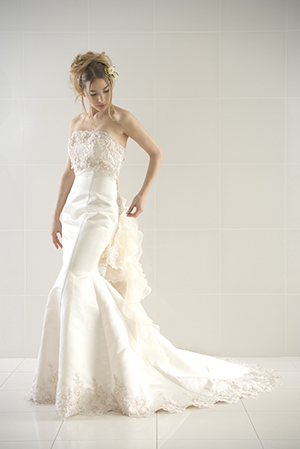 However for those who don’t wish to re-mortgage their houses, sell the BMW or borrow money from loan sharks in order to purchase a Wang or Katsura original, there are a number of young, up-and-coming designers in Japan that are worth considering. These innovators have their fingers very much on the pulse of bridal fashion and are shaping trends on and off the domestic catwalks with their delightful creations Ð many of which are available to rent, buy or be custom-made to suit your style sensibilities. One such designer is the affable Wang Liying, a graduate of the prestigious design department at Bunka Women’s University, where she specialized in design and dress tailoring. She’s presently working for the Aoyama Izumiya bridal salon in Minami-aoyama Ð an epicenter that draws a range of fashionistas, both foreign and Japanese, on the prowl for the latest looks. Insofar as wedding dresses are concerned, Liying says the ultra-slim ‛mermaid’ look is currently en vogue.
However for those who don’t wish to re-mortgage their houses, sell the BMW or borrow money from loan sharks in order to purchase a Wang or Katsura original, there are a number of young, up-and-coming designers in Japan that are worth considering. These innovators have their fingers very much on the pulse of bridal fashion and are shaping trends on and off the domestic catwalks with their delightful creations Ð many of which are available to rent, buy or be custom-made to suit your style sensibilities. One such designer is the affable Wang Liying, a graduate of the prestigious design department at Bunka Women’s University, where she specialized in design and dress tailoring. She’s presently working for the Aoyama Izumiya bridal salon in Minami-aoyama Ð an epicenter that draws a range of fashionistas, both foreign and Japanese, on the prowl for the latest looks. Insofar as wedding dresses are concerned, Liying says the ultra-slim ‛mermaid’ look is currently en vogue.
“Women nowadays are choosing more simplestyles than, say, five years ago,” Liying says. “Quality is certainly what they’re paying for these days, not volume like the ‛princess-type’ dresses of the past. When choosing a dress, women shouldn’t try to copy models in magazines or actresses they see on TV, but find something that they like naturally.”
Lavish gowns and brides adorned in diamond-encrusted tiaras, necklaces and bracelets is a very passe look, according to Liying. A simple flower arranged in the hair or a pearl necklace is sometimes the only accessory a bride needs. After all, why detract from the bride’s natural beauty and, not to mention, her dress?
“Brilliant silky white satin and champagne colored dresses are hugely popular now and lace can add elegance to a design,” she says. “The ‛natural mermaid’ style of dress is highly sought after these days by fashion-conscious brides-to-be because it can enhance a women’s body shape where needed Ð providing volume to the bust and making bottoms more shapely, resulting in a strikingly slender silhouette. Conversely, this kind of dress can be adapted to de-accentuate areas women aren’t so happy with, perhaps their waistline or upper arms. This is done by double patterning or draping techniques.”
Liying encourages her customers, an increasing number of which are foreign, to consider their own bodies first before deciding on a dress and then the occasion itself Ð location, guests and so on. She has a wealth of her own ready-to-wear designs for customers to choose from, but can also design and make one-off creations, which she believes is the real essence of a wedding dress. “Sometimes it takes an hour to design a dress, sometimes a year,” she says. “For me designing dresses isn’t dictated by time, it’s about making people happy. Although there’s a tendency these days for women to rent their dresses, I think each dress should be individually designed and made for each bride Ð making her dress the only one of its kind in the world.”
Mode de Fleur
Yes, even flowers (and their arrangements) come in and out of fashion, and as far as bridal bouquets are concerned, roses are in. Unfortunately it’s not quite as simple as going to the local flower shop, picking a bunch of roses and tying them together with twine. Bridal bouquet design is an integral part of a bride’s ensemble and so must coordinate perfectly with her outfit. It must be beautiful (yet subtle) and expertly crafted, and yet not draw attention away from the bride herself. The purpose of the bouquet is to contribute a dash of color, a suggestion of innocence and a touch of nature to the bride’s overall appearance.
According to floral artist and teacher Misako Wakayama, the bouquet should perfectly suit a bride’s image. Shapes should be graceful and colors elegant. “Round and teardrop-shaped rose bouquets are the most popular at the moment,” Wakayama says. “These shapes originate from Europe and a Parisian-style of flower arranging is popular now in Japan. Naturally, this has had an influence on wedding bouquet design as well.
“We should think of the bride as the main feature, with her bouquet contributing to her overall beauty,” she adds. “The Parisian-style is perfect for this because when we adopt this style we don’t make big opulent bouquets, we make bouquets to be the same size or even smaller than the bride’s face.”
The Wallflower
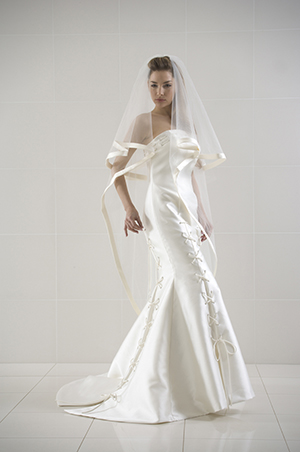 Weddings, to be fair, are all about the bride. It’s her time to shine, her time to walk down the red carpet, posing for the paparazzi. For her husband-to-be, the experience may be a little different. The groom is essentially an accessory to accentuate the bride’s beauty Ð similar to how backdrops are used in photo studios during model shoots. That said, grooms should still look sharp, as an unfashionable groom will certainly detract from his bride’s beauty. As far as the groom is concerned, it’s all about not looking too dour and stoic (so forget the white, gloves, top hat and cane), but also not resembling a pimp (so forget anything made of fur or crushed velvet, shoes with more than a three-inch heel and, again, lose the cane).
Weddings, to be fair, are all about the bride. It’s her time to shine, her time to walk down the red carpet, posing for the paparazzi. For her husband-to-be, the experience may be a little different. The groom is essentially an accessory to accentuate the bride’s beauty Ð similar to how backdrops are used in photo studios during model shoots. That said, grooms should still look sharp, as an unfashionable groom will certainly detract from his bride’s beauty. As far as the groom is concerned, it’s all about not looking too dour and stoic (so forget the white, gloves, top hat and cane), but also not resembling a pimp (so forget anything made of fur or crushed velvet, shoes with more than a three-inch heel and, again, lose the cane).
According to Liying a groom must consider his bride’s dress Ð the color, the material, the silhouette Ð before selecting his own ensemble and points grooms more towards contemporary styles rather than traditional morning suits (that make every groom look like a butler) or tuxedos (that tend to make grooms look like penguins).
The colors du jour, according to Liying, are variations of gray (silvery-gray, blue-grey etc), but also notes, as with wedding dresses, champagne as a base color for grooms is becoming increasingly popular.
Grooms needn’t limited themselves to suits. A blue-grey bespoke, single breasted, single-buttoned jacket, worn with slim-fitting light-gray pants, for example, would make for a very dashing outfit. Add a plain white dress shirt, a silver or sky-blue cravat or ring-tie, platinum cufflinks and a pair of simple black shoes and you’ve got yourself a very elegant, stylish and contemporary outfit that any bride would be happy to be seen with.
If you need to add a finishing touch to your outfit, perhaps treat yourself to a new wristwatch Ð you know you deserve it. For a classic, timeless piece (pun intended), you may be best to opt for something by Omega, Breitling or even Raymond Weil.
If you’re looking for something more contemporary, perhaps a Tag Heuer or Franck Muller is more suitable. Whichever you decide to go with, at least with a new watch on your wrist there’s no danger of you being late on the day Ð or, at least, no excuse.
related articles
■ Interview with renowned bridal couture designer Yumi Katsura Ð page 36
■ Contact information for companies offering wedding-related goods and services Ð page 62
Story by Jon Day
From J SELECT Magazine, September 2007

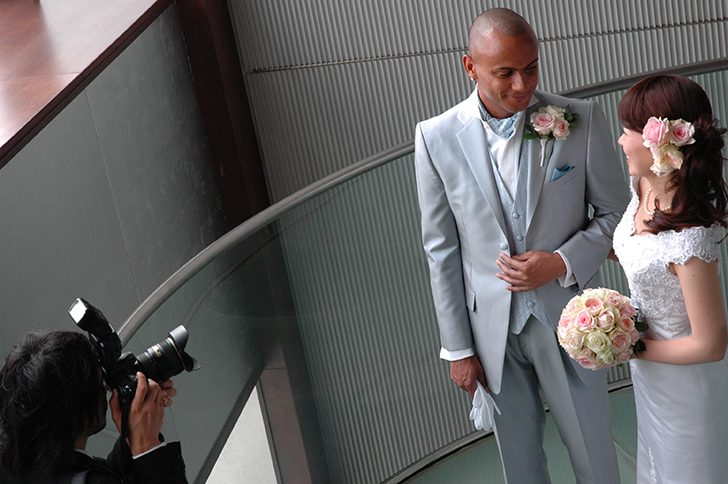

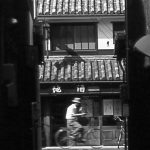
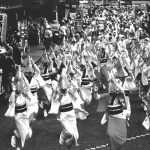
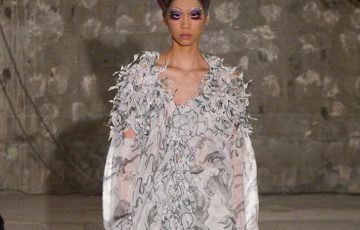
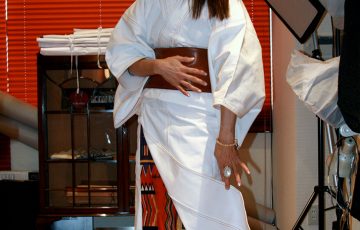
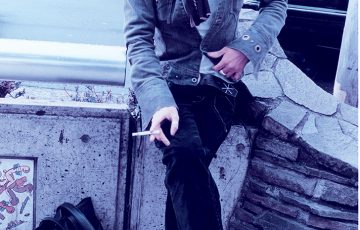
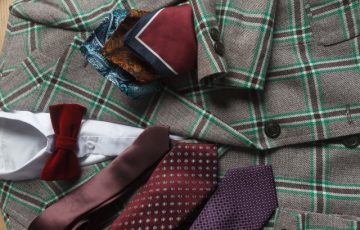

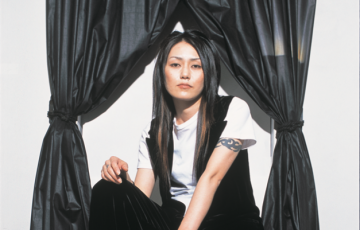


Recent Comments